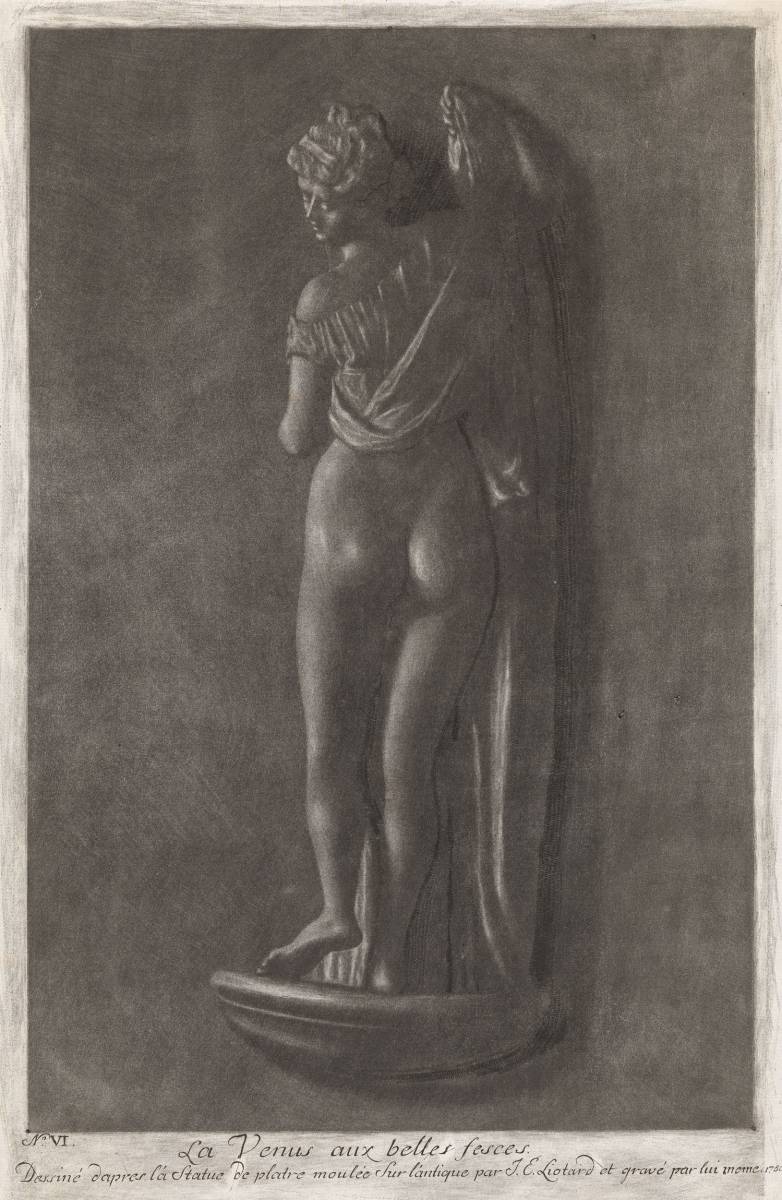This is a very rare impression of a mezzotint made by Liotard towards the end of his life entitled La Venus aux belles fesses and published in 1780. Liotard made only fifteen prints, two thirds of which date from between 1775 and 1780; four were mezzotints. The pure mezzotint shows the so-called Callipygian Venus from behind. The lettering on the plate makes it clear that Liotard was working from a plaster cast – ‘platre moulée’ – rather than the Roman sculpture, then in the Farnese collection in Naples. The print was made after a pastel dated 1774 which means it was drawn whilst Liotard was in London. We therefore know that this mezzotint depicts a cast then available in the city. One possibility is in the London house of Charles Lennox, 3rd Duke of Richmond. Richmond had established a cast collection in a gallery specifically for the use of students, it was made use of by members of William Shipley’s academy. The Duke of Richmond had acquired a series of casts from the Matthew Brettingham, including one of the Callipygian Venus which occupied a prominent position within the gallery. It is perhaps notable that drawings of the duke’s cast, made by students at William Shipley’s academy and now in the collection of the Royal Society of Arts show the Venus from behind, just as Liotard has, suggesting that it was displayed this way. Although by this date the Academy was in decline, Thomas Jones noted in 1762 that the ‘this noble Institution was now on the Decline, and the two Gentlemen who were appointed to superintend, had resigned – however the Gallery was still open to all young Artists upon proper Application.’
It, however, seems more likely Liotard made his pastel study of the Callipygian Venus at the newly opened Royal Academy Schools. The Academy certainly owned a cast of the Callipygian Venus, possibly, as Martin Postle has suggested, one supplied from Brettingham’s mould. It was described in an early account of the Academy as being ‘reckoned very fine, especially about the parts’ and was included by Elias Martin in his 1770 painting A Picture of the Plaister Academy now in the Royal Academy of Fine Arts, Stockholm. Liotard certainly visited the Royal Academy during his second London sojourn, exhibiting several works at the annual exhibition in 1773. This mezzotint was made by Liotard as an illustration to his Traité des principes et des règles de la peintrue a work laying out his rules of painting. This is a very good impression on a well-preserved, untreated sheet with wide margins.


